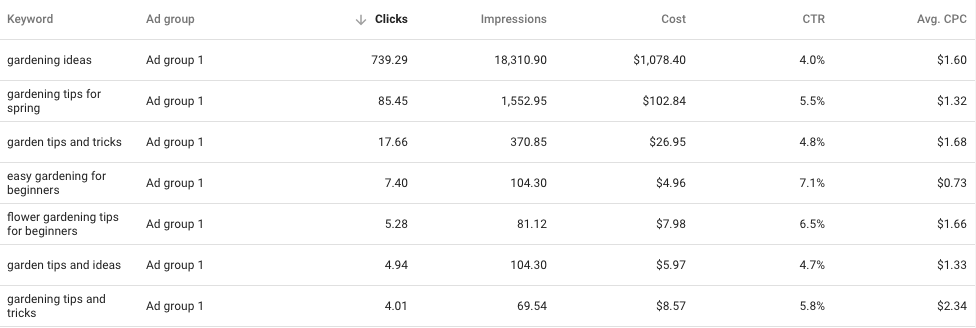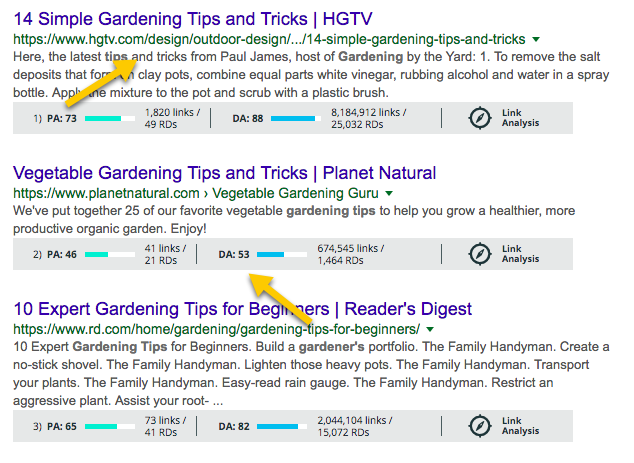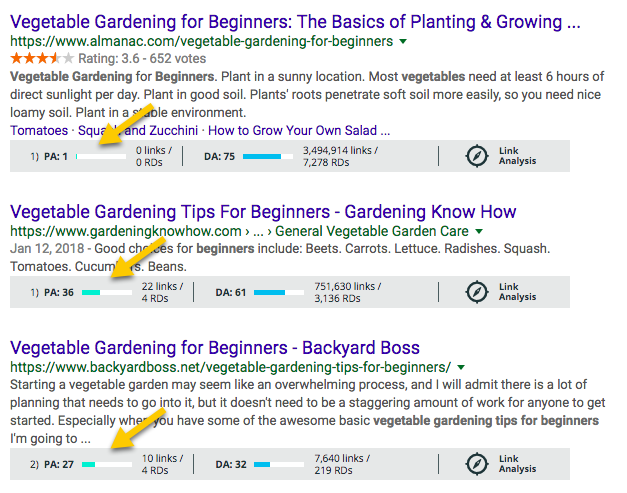3 SEO Strategies for Building a Bigger Online Community

Tending to Your Garden
I love to visualize the internet like a garden. A garden requires tending to, it requires care and attention.
The internet is the same way, specifically, the space that you take up on the internet.
Your website is your fertile ground for planting seeds (ideas) and your practice is to care for them with the right nourishment (strategy).
The roots of a garden deepen and expand over time, just like your ideas will with the correct direction, thoughtfulness, and plan of action.
In visualizing the internet in this way I believe we act from a place of intention.
When we make intentional actions, we receive intentional results.
This all stems from our ability to prioritize our goals in a way that draws in like-minded people who make up our communities.
Drawing in these people, our people, we end up seeing more collaboration, more excitement, and more engagement across the board.
Search Engine Optimization (SEO) is like the water and sunlight for the growing seeds in your fertile website landscape.
When we water our ideas with the right principles and foundational understandings of what it takes to reach our people, we begin to democratize connection within our community.
Taking the time to plant the right ideas, to grow the right lists, and to ultimately reach the right people helps us to grow a bigger online community.
Keyword Research
The first thing I do when working with a new SEO client is ask them for their top 10 – 20 keywords they would love to have their website rank for.
I usually receive a list of generic brand name, product, service, and location keywords and phrases.
This is a great place to start!
I’ll take these keywords and do some initial research and brainstorming on my own. I love free writing about my clients’ businesses and industry (after some initial research to get familiar) to get as many scenarios out on paper as possible.
If we look at the example of a garden shop we might consider some big topics relating to gardening like garden supply, gardening tips, container gardening, backyard landscaping, and gardening gifts.
These keywords are pretty general, so its fair to say there’s probably a lot of similar phrases related or that include these keywords.
This is the identifier of a list of seed keywords.
Seed Keywords
Seed keywords are the foundation, the root of your keyword strategy.
The above example we gathered the following seeds keywords: garden supply, gardening tips, container gardening, backyard landscaping, and gardening gifts.
This part of your keyword research strategy is essential for building the rest of your keyword research document.
Tools for Finding Long-Tail Keywords
Grabs results from Google Suggest.
Grabs results from Google Suggest.
Offers lists of words/phrases that tend to correlate together.
Check a keyword’s popularity over time to better understand where it’s been, where it’s headed.
Grabs search phrases from Amazon, Wikipedia, Ask.com, YouTube, and Google Suggest.
Question-based phrases specifically, questions from the online community.
Google Keyword Planner
Google Keyword Planner is your best bet for gathering the information you need without having to signup for a subscription or pay a monthly fee to access data.
There are lots and LOTS of tools out there to utilize to expand your keyword research to new levels, but for today, Google KW Planner is all we need.
Gather the data you need by copy/pasting your keywords lists you’ve built into Google Keyword Planner to find the number of clicks, impressions, cost, CTR, and Average CPC for each keyword.

Creating & Organizing Your Document
By utilizing the keyword research tools listed above like Ubersuggest, Answer the Public, and Google Keyword Planner we’ll have a lot of keywords on our hands.
It’s essential that going into your research, you have a plan for organizing your data.
It can be as simple as creating a separate tab within your main spreadsheet for each seed keyword you intend to develop a list of long-tail phrases for. Each tab will house all related keywords and long-tail phrases that are related to that main, seed topic.
Leveraging Competitor Insights
Before we go any further, you must download the Moz Bar for your browser.
This simple tool will offer you super important data you’ll need to understand how your competitors are ranking in search and how you can find the gaps in your industry.
Enter your keyword/phrase that you’d like to begin working with into Google search. Next, turn on your Moz button that should be located at the top of your browser, next to your search bar.

Once you’ve turned on the Moz bar, you should be able to see details below each of the search results that come up.
Take a look at PA (Page Authority) and DA (Domain Authority). These scores are calculated to determine a site’s authority on the web (the page or domain). Authority score is determined based on a scale of 100, where 100 is the highest (ex. Google).
For our purposes, we’ll be looking at the Page Authority over Domain Authority, although Domain Authoirty is something to also keep in mind in terms of how competitive a piece of content is (and how difficult it’ll be to outrank).
The below example depicts the top three organic (non-ad) listings for the search term “Gardening Tips”:

Below shows the top three search results for the long-tail phrase “vegetable gardening tips for beginners”:

The keyword term “Gardening Tips” has much higher PA and DA than the long-tail, specific, the targeted phrase “Vegetable gardening tips for beginners”.
In this scenario, it would be best to write a content piece that’s targeted specifically to “Vegetable gardening tips for beginners” since the current search results reflect lower PA’s.
Pro Tip: Check out the number of links that show next to both PA and DA. Using the Moz bar, you can click the # of links next to the PA score and Moz will pull up with the sites that are currently linking to that particular page. Use this information to access what your competitor’s backlinks are like: do they seem to be from high authority blogs and news sites? Or do they appear to be spammy with low authority and with lots of ads?
Find the Low Hanging Fruit
Competitor insights help us to prioritize our keyword research efforts in a way that’s going to spend our time wisely and effectively in preparation for a new piece of content.
I’m sure you’ve heard the phrase “go after the low hanging fruit” in one way or another.
In terms of SEO and specifically, competitor insights, we’re looking for the opportunities that will offer us the most traffic possible with the least amount of competition.
As with the entirety of our SEO practices, the end game is to offer our online community more value than our competition.
Process for going after Low Hanging Fruit:
- Enter your keyword into Google search
- Look for one or more defining quality of “low hanging fruit”
- Review the quality of the content
Qualities of Low Hanging Fruit:
- Pages with <20 PA and DA
- Ezine Articles
- Yahoo! Answers
- Ehow.com
- Buzzle
- Squidoo Lenses
- HubPages
- Ebay
- WordPress.com
- Blogspot (or other free blog)
- Spammy press release sites
The qualities above reflect the websites/content you’ll want to look for when doing your competitor research. Simply by plugging in your keyword/long-tail phrase into Google search, you’ll find an array of competitor information.
If you see one or more of the above kinds of pages in your search results, it is pretty likely that you can outrank those links.
In most cases, search results full of Ehow.com or Yahoo! Answers are lacking in-depth, quality content that searchers are looking for. By creating targeted content, specific to your keyword/phrase, you’ll have the opportunity to provide value around that topic that none of your competitors have done thus far.
Review the Quality of Your Competitor’s Content
The final step of the going after the low hanging fruit process is the review of your competitor’s pages that you’ve gathered.
If you’ve completed the initial steps, you have:
- completed your keyword research
- found some long, specific, targeted keywords/phrases you want to start working with
- plugging the keyword into Google search
- evaluated PA & DA
- made a list of the content pieces you want to beat (usually the top 1 – 10 found in search results)
Now, it’s time to learn exactly what you need to do to outrank your competition.
Begin by opening up, one by one, each competitor page you want to beat in rankings. Next, review the following qualities of the page:
- content length (how many words?)
- writing style (from what perspective is it written?)
- check for visual aids (are there images, video, lists, charts, etc?)
- check for comments (does anyone ask a question?)
Content Writing
There are X things to keep in mind when creating a new piece of content (from a technical & creative standpoint):
- Write freely first. Take some time to write without limitation or judgment to get your thoughts out on paper.
- Include your target keyword/phrase in the title of the content as well as the permalink.
- Use your target keyword or phrase at the beginning of your content, using it in higher frequency.
- Include images, videos, charts, and lists to break up your content into more digestible chunks.
- Creative comprehensive content.
By taking the time to go through keyword research and review competitor insights you’ll prepare yourself for the purpose and direction of your content.
The goal of your new piece is to offer value to your readers in a way that’s better than any online experience already available.
Understanding the value that’s already being offered in search is key for narrowing your focus on real needs in your industry.
Connecting it all to Build a Bigger Community
Combining my SEO strategy and community building mindset is one of my favorites things to do.
Both SEO and community building are broad, big topics. There are so many intricacies involved with each, which makes drawing connections between the two all that much more fun.
On the surface, it appears that SEO is purely technical and black and white. The way I practice SEO is to envision the whole process as drawing a blueprint for creativity.
“I’ve learned that I still have a lot to learn.”
Maya Angelou
Taking time to set your intentions and priorities clearly is key for a successful piece of content.
A deliberate approach to content creation through the use of keyword and competitor analysis strategies helps us to create content that serves a purpose and fills the gap of missing value.
This practice inspires challenge, creativity, and community.
We have the power to maintain the integrity of the internet – competition on the web helps us to develop high-quality connections with our people.
When we better understand our people, we better serve them. When we serve our people, we build a community for life.






